Our latest news and views English
Underpinned by our Scandinavian design heritage, we bring you regular stories about architecture and interiors, exploring natural materials, acoustics, and the creation of safe and harmonious environments.
Revisiting Wingårdhs award-winning design for the SEB bank’s headquarter in Stockholm, we talk to Helena Toresson and Sara Helder about natural materials and the social potential of workspaces, and explore how the pandemic is accelerating the shifting role of the office.
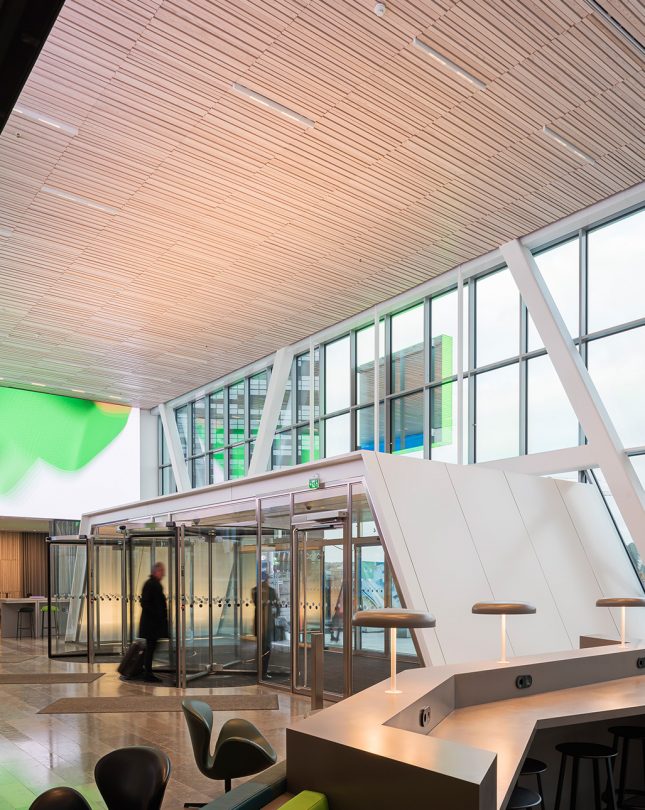
In March 2017, the American political analyst, Professor Robert Kelly, along with his wife and two young children, became a global internet sensation, when, during a live-streamed interview between Kelly and the BBC, the children burst into their father’s office. A moment later Kelly’s wife skidded into the room to retrieve the youngsters, scurrying them out the door and locking it behind her.
Three years later, COVID-19 was declared a global pandemic. Offices around the world closed their doors, and work began at the kitchen table, on a laptop, in tracksuit bottoms. Since then, some of us have found ourselves starring in a Professor Kelly-esque scene, with work-call cameos from partners, flatmates, children and pets. Others have experienced extreme isolation. The pandemic orchestrated a mass experiment on the impact of working environments – not just in terms of our productivity, but perhaps more crucially, our wellbeing.
Wingårdhs arkitektkontor in Sweden, suggests that it is indeed faces – and movement – that we miss the most about office life.
“In the office, physical movement is just as natural as being sedentary. It is the people and the activity – and indeed the agility – that is missed. To be able to meet without technical impediments, to easily and quickly discuss something with your co-workers; the conversations by the coffee machine, the greeting halfway up the stairs, the buzz between meetings.”
She also points out that the physicality of a workplace brings with it a feeling of context. “When a group of people reside in the same place, it will give an individual the notion of belonging to a bigger picture. In the best circumstances, it can also make employees feel proud, and is a tool for the employer to express that they care about their workforce.”
Productivity was a key concern as the work from home movement was enforced. However, according to a recent report from Cardiff University and the University of Southampton, 69.8% of homeworkers reported that they were able to get as much work done, if not more (28.9%,) from home as they had from the office. These statistics encourage us to reevaluate what the role of a workspace will be post-COVID, now it’s apparent that, for 70% of us, the office isn’t actually integral to getting work done.
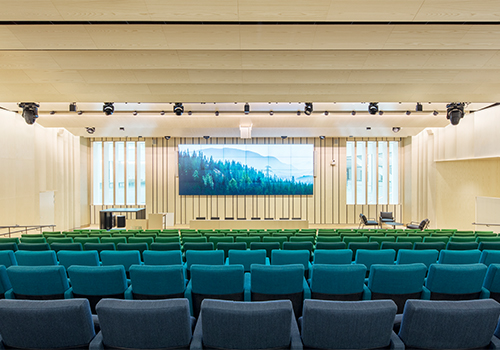
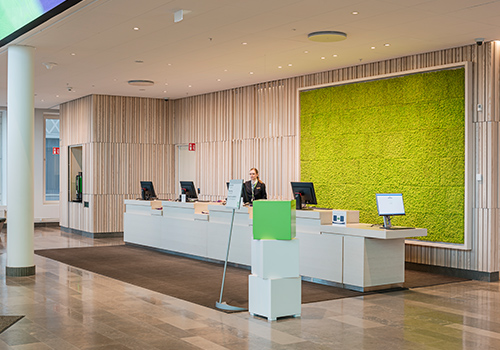
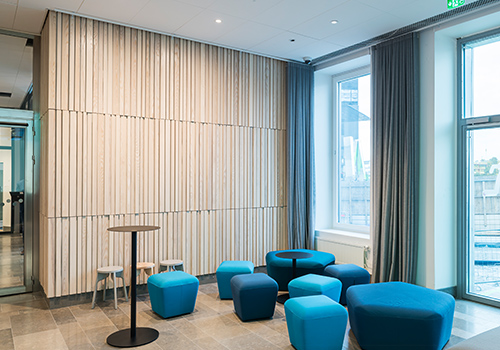
Wingårdhs sought to answer this question with the design of the headquarters of Swedish bank SEB, on the outskirts of Stockholm, in Arenastaden, Solna. Designed and completed the same year that Professor Kelly’s family went viral, its design (for which it was awarded the accolade of ‘Sweden’s most beautiful office’,) highlighted the shift towards a new type of workplace, which, post-pandemic, is likely to become even more important.
Accommodating over 4,500 employees, the office is made up of three buildings, and Wingårdhs were tasked with designing the interiors. As Sarah Helder, architect at Wingårdhs who co-led the project together with Helena Toresson, remarks,
“The kind of work that is accomplished in an office doesn’t only originate from working behind a screen and emailing. To be able to vary your environment for your work is incredibly important in all professions where creativity is part of the process.”
The building features four atriums, each with a specific function: the first encourages spontaneous meetings; the second, flexible gatherings; the third has the character of a living room – somewhere to go when you want to work in a relaxed environment; the fourth acts a flexible alternative to your own home office.
Whilst a physical office helps an employer create a harmonious space, focused on the wellbeing and productivity of its workforce, it’s also an opportunity to nurture and celebrate a company’s brand and ethos.
Helder refers to the layout and flow of the building as one that encourages “spontaneous meetings which enrich work, collaboration and friendships”, and that materials, patterns and colours have been chosen carefully to inject energy and identity to the work environment, reflecting SEB’s brand ethos and further enhancing collaboration.
The project features wood throughout, tapping into Biophilic Design, anchored in human’s innate connection to nature. Studies have proved that being in the presence of natural materials has physiological and psychological benefits, including reducing stress and increasing positive social interactions, something that will become even more important for the ‘experience-based’ office of the future. Gustafs supplied ribs, acoustic panels and custom-made solutions for a range of spaces; from boardrooms and auditoriums, to the entrance hall and atrium in one of the buildings.
Helena Toresson comments,
“Wood is a fantastic material. It’s sustainable over time, ages well, and it’s colours create a warm atmosphere. With the wood panels used in the project, important functions such as acoustics and fire safety have been embedded into the cladding; covering issues that have to be addressed in all public buildings.”
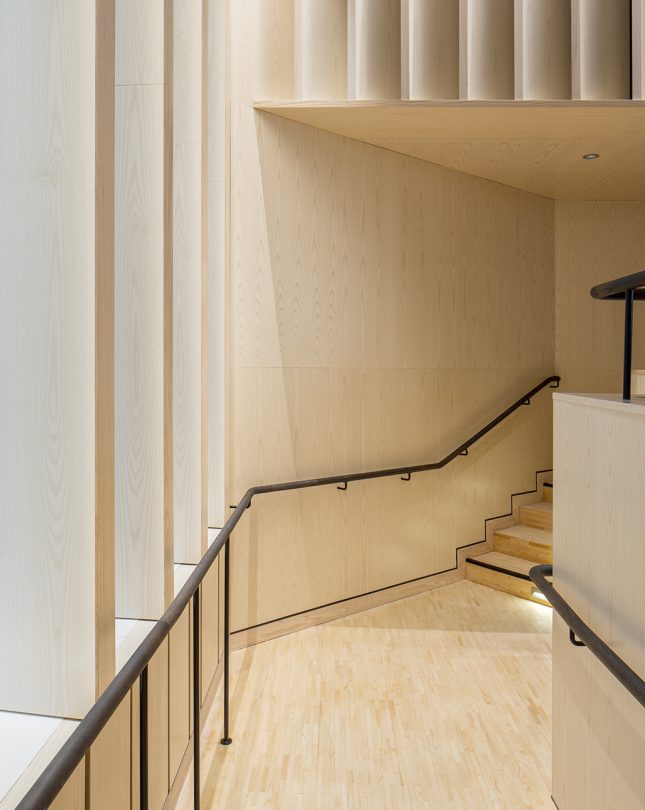
As we look back to 2017, and the then newly designed SEB office, it is clear that the primary role of the workspace was shifting already, towards flexible, agile and collaborative working.
Looking now to the future, we are likely to see more offices catering for the social needs of a hybrid workforce; where spaces for presentations and in-person brainstorms will sit side by side with high-tech booths, optimised for glitch-free virtual meetings. With collaboration and experiences at their heart, perhaps offices like SEB’s head office, will be best placed to thrive in the legacy of the pandemic.
References:
Felstead, A and Reuschke, D (2020) ‘Homeworking in the UK: before and during the 2020 lockdown’, WISERD Report, Cardiff: Wales Institute of Social and Economic Research. Available for download from: https://wiserd.ac.uk/publications/homeworking-uk- and-during-2020-lockdown
Lowe, G (2020) ‘Wood, Well-being and Performance: The Human and Organization Benefits of Wood Buildings’ British Columbia, Canada: Forestry Innovation Investment. Available for download from: https://www.naturallywood.com/wp-content/uploads/2020/08/wood-well-being-and-performance_report_graham-lowe.pdf
Photos: Andre Pihl & Devis Bionaz